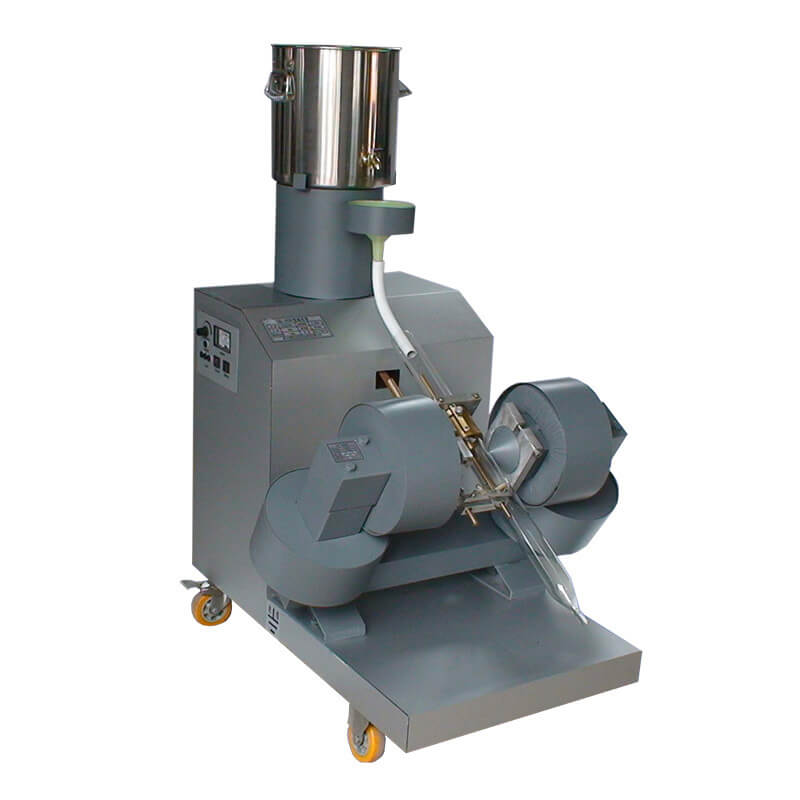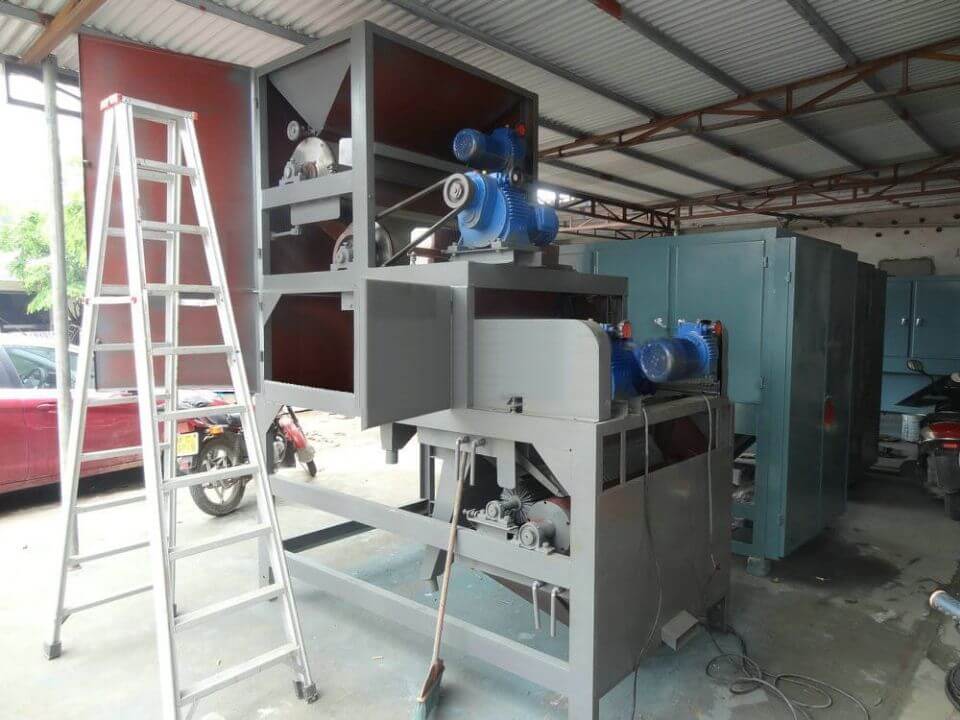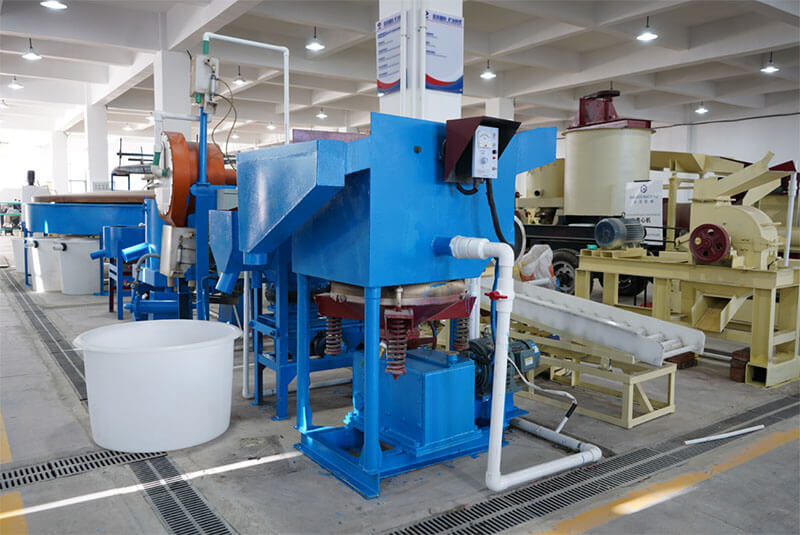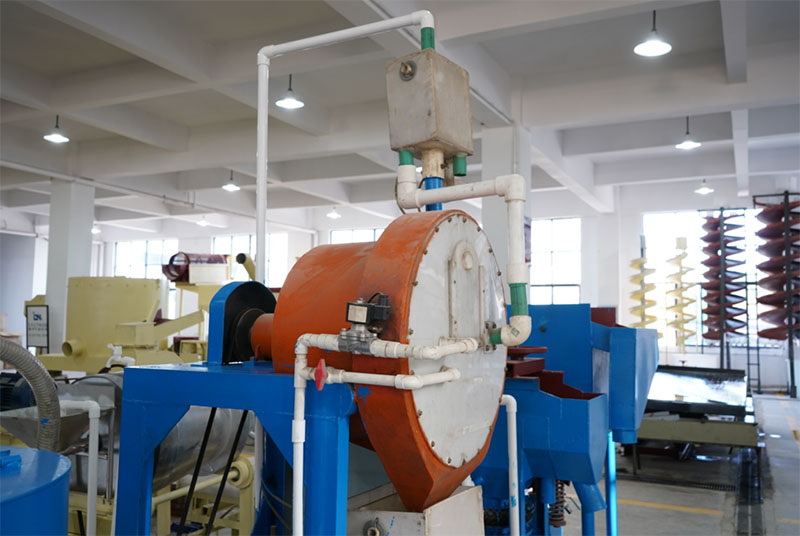The magnetic separator tube is also known as Davis Analysis Tube. This machine is suitable for coal processing, mining, metallurgy, geology, and other laboratory uses. It can analyze the content of magnetic components of strong magnetic ores and provide a reference basis for mine sorting.
RX/CXG—50 magnetic separator tube tester-type magnetic separator tube adopts a new controllable power supply and excitation control. According to the needs of convenient operation, accurate measurement, and reliable operation to adjust the magnetic field strength. It meets the requirements of national standards for experimental equipment.
Main Technical Parameters
(1) magnetic field parameters
Magnetic pole gap: 52mm
Magnetic field strength: 0-300mT infinitely adjustable
(2) Glass tube parameters
Diameter: D = 50mm
Moving Stroke: S = 40mm
Oscillation Frequency: f = 70 times/min
(3) Sample size: <0.5mm
(4) Power supply voltage AC: 220/380V. 50Hz
(5) The quality of the whole machine: 220Kg

Working Principle And Structure
(1) RX/CXG – ∅ 50 Magnetic Separation Tube Tester. The magnetic separation tube installs with a glass tube in the middle of a C-shaped magnet, and the sample moves and swings through the glass tube. In the magnetic field area, the magnetic material adsorb on the wall of the tube. Non-magnetic substances flush out of the tube by water.
(2) RX/CXG—50 Magnetic Separation Tube Tester. The Magnetic Separator Tube includes the main machine and the excitation power supply.
Part I
- The main machine includes a C-shaped iron core, excitation winding, and a swinging device. The C-shaped iron core and excitation winding are essential for generating magnetic field strength. By adjusting the current of the excitation winding, the C-shaped iron core will generate a variable magnetic field strength. Fully separate the sample particle size by swinging and moving the device.
- The glass tube device should form a 30-degree angle with the horizontal line. The reciprocating stroke of the pipe is 40mm, and the oscillation frequency is 70 times/min with a Swing angle of 45 degrees. The sample enters the tube through a funnel at the upper end of the glass tube. The lower end of the glass tube connect by a rubber tube with a spiral clamp. The spiral clamp can adjust the flow rate of water.
Part II
The excitation power supply to the excitation winding through the SCR output DC voltage, the size of which is adjusted by a multi-turn potentiometer. The current size is read directly through the ammeter. The potentiometer rotates counterclockwise to decrease the current and clockwise to increase it. AC input 380V/220V three-phase four-wire power supply, AC output 380V three-phase. Excitation current output DC.

Operation
- First check: The glass test tube position is in the middle of the two poles, and the horizontal line presents an angle of 30 °. The twisting device the test tube and other parts of the connection are solid, with no-load test run stability, abnormalities immediately shut down, and need repair.
- Take the sample mass of about 20 grams, add 300 ml of water, place in a 500 ml beaker, add the appropriate amount of alcohol. Stirring, and let stand for 5 minutes.
- First, rotate the current adjustment knob counterclockwise to the minimum value of 0A, then turn on the power switch button. Then rotate the excitation switch clockwise. Adjust the excitation current from the minimum to 2.5A at an even speed, depending on the requirements of the material sample.
- Close the spiral clamp at the lower end of the test tube, and fill the glass tube with water, so that the water level in the glass tube is lower than the mouth of the airflow discharge tube. In turn, open the motor button, and the test tube randomly oscillates and moves to run. The sample mixture of liquid is slowly go to the experimental glass tube along the funnel.
- At the same time, collect the discharged solution, and repeatedly wash the beaker with water so that the sample is completely injected into the glass tube. The collected liquid was repeated and done again. The discharged liquid is discarded and ready to collect the magnetic material.
- Open the faucet to rinse the inner wall of the glass tube. When the liquid in the glass tube is clear and analyzed, turn off the motor switch and turn off the faucet in turn. Then turn off the current adjustment knob, the magnetic material will be discharged into the beaker. The beaker will be on top of the round permanent magnet, stand still for a few minutes, and pour off the top of the water.
- Filter, with a weighed filter paper m 1, the liquid mix with the magnetic substance in the beaker.
- Drying and weighing. Dry the filter paper and the magnetic substance together at a temperature not exceeding 100 degrees to a constant state of mass, and weigh the total mass m 2 immediately after removing it from the desiccator.
- Calculation:
Percentage content of the magnetic substance β = (m 2 – m 1)/m *100%
β – Percentage content of the magnetic substance %
m2 –Pure magnetic material + filter paper mass g
m1 –Filter paper mass
m –Sample mass g
Maintenance and Caution
- Regularly clean dust and oil stains, and add lubricating oil to the motion connection points.
- Keep the excitation knob counterclockwise in the 0 state to prevent equipment damage due to excessive starting current caused by negligence in the following use.
- Do not sprinkle water on the excitation winding to avoid damage to the equipment due to a short circuit of the excitation winding caused by water.
- Check whether the excitation power supply and switchboard are reliably ground.
Routine maintenance
(1) Reasons for motor unworkable:
1. Power failure 2. Power phase loss 3. The motor fuse is blown 4. The motor burn out 5. Button sleeve locked 6. Other stuck
(2) excitation current does not have:
1, the current is regulate too small 2, thyristor burn out 3, the winding short-circuit 4, check for other reasons
Packing List
host 1; 1 glass tube; 1 stainless steel bucket, 1 bucket bracket, 1 piece of faucet, 1 funnel, 1 card, 1 piece of liquid discharge pipe, 1 piece of water pipe,
a manual; a certificate of conformity
JXSC lab mineral processing equipment manufacturer has more than 38 years of experience in mining processing. We provide various lab mining equipment including gravity-separating equipment for processing minerals such as gold, tin, tungsten, lead, zinc, tantalum, niobium, iron, manganese, silver, titanium-iron, etc. Lab machines include laboratory jaw crusher, hammer crusher, roller crusher, grinding equipment, lab gravity separator, screening, washing equipment, etc. Welcome to consult!




